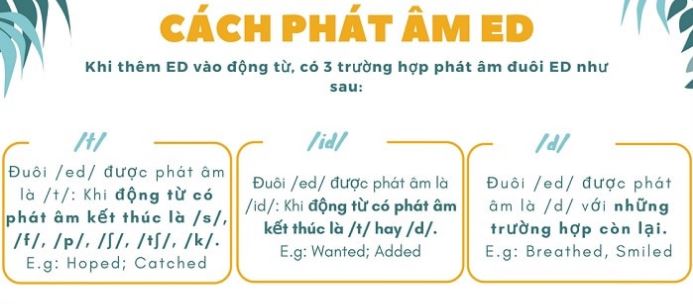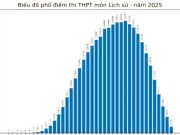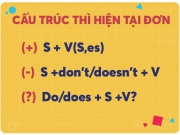Cách phát âm ED, S, ES chuẩn trong tiếng anh
Trong khi nói, tùy từng trường hợp mà đuôi “-ed” được đọc khác nhau. Do đó bạn cần phải nắm vững cách phát âm đuôi ed này, nếu không khi giao tiếp người bản xứ sẽ thấy rất khó hiểu.
Về mặt ngữ pháp, khi chia động từ có quy tắc ở thì quá khứ hay các thì hoàn thành, ta thêm đuôi “-ed” vào sau động từ nguyên thể (e.g: wanted, helped, lived), và đôi khi cũng có các tính từ kết thúc bằng “ed” (e.g: tired, embarrassed, relaxed).
Bài viết dưới đây sẽ tổng hợp lại cho bạn các cách phát âm ed cũng như phát âm đuôi “es, s”, kèm theo đó là video và các bài đọc ngắn cho bạn luyện tập.
Trước khi học cách phát âm ed thì bạn cần phải biết thế nào là âm hữu thanh và âm vô thanh.
Lưu ý: Bất cứ khi nào bạn thấy chữ cái hoặc ký hiệu giữa hai dấu gạch chéo (/ /), nghĩa là nó đề cập đến cách phát âm hoặc âm điệu của chữ cái đó.
Âm hữu thanh: Nghĩa là những âm mà trong khi nói, chúng ta sẽ sử dụng dây thanh quản và chúng sẽ tạo ra âm trong cổ. Bạn có thể đặt tay lên cổ họng và phát âm chữ L. Bạn sẽ nhận thấy cổ hơi rung rung. Đó chính là âm hữu thanh.
Âm vô thanh: Nghĩa là những âm mà cổ họng bạn không rung khi bạn nói. Bạn đặt tay lên cổ họng và phát âm chữ P. Bạn sẽ nhận thấy âm này bật ra bằng hơi từ miệng mà không phải từ cổ họng.
Hãy thử làm như thế với các chữ cái khác và bạn sẽ “cảm nhận” được sự khác biệt giữa các âm hữu thanh và âm vô thanh.
Giờ bạn đã biết được sự khác nhau giữa âm hữu thanh và âm vô thanh, bạn hãy nhìn vào các quy tắc phát âm “ed” đúng dưới đây:
Cách phát âm ED trong tiếng Anh
Có 3 cách phát âm ed chính
1. Đuôi /ed/ được phát âm là /t/: Khi động từ có phát âm kết thúc là /s/, /f/, /p/, /ʃ/, /tʃ/, /k/ và những động từ có từ phát âm cuối là “s”.
E.g:
- Hoped /hoʊpt/: Hy vọng
- Coughed /kɔːft/: Ho
- Fixed /fɪkst/: Sửa chữa
- Washed /wɔːʃt/: Giặt
- Catched /kætʃt/: Bắt, nắm bắt
- Asked /æskt/: Hỏi
2. Đuôi /ed/ được phát âm là /id/: Khi động từ có phát âm kết thúc là /t/ hay /d/.
E.g:
- Wanted /ˈwɑːntɪd/: muốn
- Added /æd/: thêm vào
3. Đuôi /ed/ được phát âm là /d/ với những trường hợp còn lại.
E.g:
- Cried /kraɪd/: Khóc
- Smiled /smaɪld/: Cười
- Played /pleɪd/: Chơi
Chú ý: Đuôi “-ed” trong các động từ sau khi sử dụng như tính từ sẽ được phát âm là /ɪd/ bất luận “ed” sau âm gì:
- Aged
- Blessed
- Crooked
- Dogged
- Learned
- Naked
- Ragged
- Wicked
- Wretched
E.g:
- An aged man /ɪd/
- A blessed nuisance /ɪd/
- A dogged persistence /ɪd/
- A learned professor – the professor, who was truly learned /ɪd/
- A wretched beggar – the beggar was wretched /ɪd/
Nhưng khi sử dụng như động từ, ta áp dụng quy tắc thông thường:
- He aged quickly /d/
- He blessed me /t/
- They dogged him /d/
- He has learned well /d/
Bạn có thể lưu lại Infographic sau đây:

Luyện tập phát âm ED
Sau khi nắm được cách phát âm ed rồi thì bạn hãy thực hành với 3 câu chuyện ngắn sau đây. Bạn chỉ cần chọn 1 trong 3 câu chuyện này, luyện tập thật thành thạo rồi hãy chuyển qua câu chuyện khác. Chú ý là bạn phải đọc nhấn nhá cả âm điệu, mà không chỉ mỗi cách phát âm ed.
The Fox and the Grapes
|
One afternoon, a fox was walking through the forest and spotted a bunch of grapes hanging from a lofty branch. “Just the thing to quench my thirst,” said the fox. Taking a few steps back, the fox jumped and just missed the hanging grapes. Again, the fox took a few paces back and tried to reach them, but still failed. Finally, giving up, the fox turned up his nose and said, “They’re probably sour anyway.” Then he walked away. |
The Devoted Mother
|
A mother duck and her little ducklings were on their way to a lake one day. The ducklings were very happy following their mother and quack-quacking along the way. All of a sudden, the mother duck saw a fox at a distance. She was frightened, and shouted, “Children, hurry to the lake. There’s a fox!” The ducklings hurried towards the lake. The mother duck wondered what to do. Then she began to walk back and forth dragging one wing on the ground. When the fox saw her, he became happy. He said to himself, “It seems she’s hurt and can’t fly! I can easily catch and eat her!” He ran towards her. The mother duck ran, leading the fox away from the lake. The fox followed her. Now he wouldn’t be able to harm her ducklings. The mother duck looked towards her ducklings and saw that they had reached the lake. She was relieved, so she stopped and took a deep breath. The fox thought that she was tired and he came closer, but the mother duck quickly spread her wings and rose up in the air. She landed in the middle of the lake and her ducklings swam to her. The fox stared in disbelief at the mother duck and her ducklings. The mother duck had tricked him cleverly. Now he could not reach them because they were in the middle of the lake. |
The Lion and the Mouse
|
Once when a lion, the king of the jungle, was asleep, a little mouse began running up and down on him. This soon awakened the lion, who placed his huge paw on the mouse, and opened his big jaws to swallow him. “Pardon, O King!” cried the little mouse. “Forgive me this time. I shall never repeat it and I shall never forget your kindness. And who knows, I may be able to do you a good turn one of these days!” The lion was so tickled by the idea of the mouse being able to help him that he lifted his paw and let him go. Sometime later, a few hunters captured the lion, and tied him to a tree. After that they went in search of a wagon, to take him to the zoo. Just then the little mouse happened to pass by. On seeing the lion’s plight, he ran up to him and gnawed away the ropes that bound him, the king of the jungle. “Was I not right?” said the little mouse, very happy to help the lion. |
Cách phát âm S và ES trong tiếng Anh
1. Âm s và es được phát âm là /ɪz/ (hoặc âm /əz/)
Ví dụ cụ thể với những trường hợp được phát âm là /ɪz/:
- C: races (sounds like “race-iz”)
- S: pauses, nurses, buses, rises
- X: fixes, boxes, hoaxes
- Z: amazes, freezes, prizes, quizzes
- SS: kisses, misses, passes, bosses
- CH: churches, sandwiches, witches, teaches
- SH: dishes, wishes, pushes, crashes
- GE: garages, changes, ages, judges
2. Phát âm là /s/
Nếu các phụ âm cuối cùng là các phụ âm vô thanh, thì “s” sẽ được phát âm là /s/. Hãy cẩn thận đừng để tạo ra thêm âm phụ nào.
Ví dụ cho những từ kết thúc được đọc bằng âm /s/:
- P: cups, stops, sleeps
- T: hats, students, hits, writes
- K: cooks, books, drinks, walks
- F: cliffs, sniffs, beliefs, laughs, graphs, apostrophes (phụ âm “-gh” và “-ph” ở đây được phát âm như F)
- TH: myths, tablecloths, months (âm vô thanh “th”)
3. Phát âm là âm /z/
Nếu chữ cái cuối cùng của từ kết thúc bằng một phụ âm (hoặc âm hữu thanh), thì chữ S được phát âm giống như chữ Z, là /z/ (mà không tạo ra âm nào khác).
Ví dụ cho những từ kết thúc được đọc bằng âm /z/:
- B: crabs, rubs
- D: cards, words, rides, ends
- G: rugs, bags, begs
- L: deals calls, falls, hills
- M: plums, dreams
- N: fans, drains, runs, pens
- NG: kings, belongs, sings
- R: wears, cures
- V: gloves, wives, shelves, drives
- Y: plays, boys, says
- THE: clothes, bathes, breathes
- Nguyên âm: sees, fleas
Luyện tập phát âm S và ES
Sau khi nắm được cách phát âm s và es rồi thì bạn hãy thực hành với 3 đoạn văn ngắn sau đây. Bạn chỉ cần chọn 1 trong 3 đoạn văn này, luyện tập thật thành thạo rồi hãy chuyển qua đoạn khác. Chú ý là bạn phải đọc nhấn nhá cả âm điệu, cách nối âm mà không chỉ mỗi cách phát âm s và es.
SEASONS
|
Between the months of November and May a wind blows from the west in most parts of Indonesia. It comes from the ocean and carries rain. Clouds build up around the mountains, and every afternoon rain falls. The rain is always heavy, and rivers that can be walked across in the dry season now become dangerous. When it rains the whole day, they may suddenly overflow and cause great damage to the land. Most farmers are glad when wet season begins. There is water for their fields and they can again start growing rice. But people in town are not so glad because the streets soon get muddy and dirty. They prefer the dry season when they can sit outside and enjoy the cool evenings. |
Learning English
|
Every year students in many countries learn English. Some of these students are young people, other are teenagers. Many are adults. Some learn at school, others study by themselves. A few learn English just by hearing the language in film, on television, in the office or among their friends. But not many are lucky enough to do that. Most people must work hard to learn another language. Many boys and girls learn English at school because it is one of their subjects. They study their own language, mathematics and English. In England, America and Australia may boys and girls study their own language, which is English, and mathematics and another language, perhaps French, German or Spanish. Many adults learn English, because it is useful for their work. Teenagers often learn English for their higher studies, because some of their books are in English at the college or university. Other people learn English because they want to read newspapers or magazines in English. |
David and Rosa’s
|
Day David is a bank manager and Rosa is a doctor in a large hospital. David gets up at 7.30 am and has a bath. He leaves home at 8.30 and goes to work by car. He arrives at the bank at 9.00. Rosa gets up at 9.30 because she doesn’t start work until 1.00 in the afternoon. She catches the bus to the hospital at 12.15. David finishes works at 5.30 and goes shopping in the supermarket near the bank. Then he goes home and cooks dinner. He eats alone in the kitchen at 7.00 and then usually watches TV in the living room until Rosa arrives home at 10.00. She often has her diner in front of the TV. David goes to bed at 11.00, but Rosa usually goes to bed at 11.30. |
Lời kết:
Trên đây là bài tổng hợp cách phát âm “ed”, cũng như phát âm đuôi “es, s”. Bạn có thể in ra để tiện sử dụng. Dưới đây bài hát sử dụng rất nhiều các từ đuôi ed, bạn có thể vừa giải trí và vừa học qua bài hát này.
Để phát âm chuẩn và giao tiếp thành thạo, tự nhiên thì tôi khuyên bạn nên áp dụng kỹ thuật nói đuổi. Đây là một kỹ thuật rất hay trong việc luyện nói.
Theo x3english
Đánh giá & nhận xét

-
 Cách dùng say và tell trong câu gián tiếp, Sự khác nhau giữa tell và say trong câu gián tiếp
Cách dùng say và tell trong câu gián tiếp, Sự khác nhau giữa tell và say trong câu gián tiếp
-
 Cách dùng thì hiện tại đơn, công thức và bài tập áp dụng - Simple Present
Cách dùng thì hiện tại đơn, công thức và bài tập áp dụng - Simple Present
-
 Cách dùng thì hiện tại tiếp diễn, công thức và bài tập áp dụng - Present Continuous
Cách dùng thì hiện tại tiếp diễn, công thức và bài tập áp dụng - Present Continuous
-
 Cách dùng thì hiện tại hoàn thành, công thức và bài tập áp dụng - Present Perfect
Cách dùng thì hiện tại hoàn thành, công thức và bài tập áp dụng - Present Perfect
-
 Cách dùng thì hiện tại hoàn thành tiếp diễn, công thức và bài tập áp dụng - Present Perfect Continuous
Cách dùng thì hiện tại hoàn thành tiếp diễn, công thức và bài tập áp dụng - Present Perfect Continuous
-
 Cách dùng Thì quá khứ đơn, công thức và bài tập áp dụng - Simple Past
Cách dùng Thì quá khứ đơn, công thức và bài tập áp dụng - Simple Past
-
 Cách dùng thì quá khứ tiếp diễn, công thức và bài tập áp dụng - Past Continuous
Cách dùng thì quá khứ tiếp diễn, công thức và bài tập áp dụng - Past Continuous
-
 Thì quá khứ hoàn thành tiếp diễn, cách dùng, công thức và bài tập áp dụng - Past Perfect Continuous
Thì quá khứ hoàn thành tiếp diễn, cách dùng, công thức và bài tập áp dụng - Past Perfect Continuous
-
 Cách dùng thì tương lai đơn công thức và bài tập áp dụng - Simple Future
Cách dùng thì tương lai đơn công thức và bài tập áp dụng - Simple Future
-
 Thì tương lai tiếp diễn, cách dùng và bài tập áp dụng - The Future Continuous
Thì tương lai tiếp diễn, cách dùng và bài tập áp dụng - The Future Continuous
-
 Thì tương lai hoàn thành, cách dùng và bài tập áp dụng - The Future Perfect
Thì tương lai hoàn thành, cách dùng và bài tập áp dụng - The Future Perfect
-
 Thì tương lai hoàn thành tiếp diễn, công thức và bài tập áp dụng - Future Perfect Continuous
Thì tương lai hoàn thành tiếp diễn, công thức và bài tập áp dụng - Future Perfect Continuous
-
 Quy tắc thêm s, es và cách phát âm chuẩn đuôi s,es trong tiếng anh
Quy tắc thêm s, es và cách phát âm chuẩn đuôi s,es trong tiếng anh
-
 Cách phát âm chuẩn đuôi ed trong Tiếng anh
Cách phát âm chuẩn đuôi ed trong Tiếng anh
-
 Phân biệt cách dùng Will và Be Going To trong tiếng anh
Phân biệt cách dùng Will và Be Going To trong tiếng anh
-
 Cách phân biệt, sử dụng Will và Shall trong tiếng anh
Cách phân biệt, sử dụng Will và Shall trong tiếng anh
-
 Cách dùng Shall và Should, Will và Would trong tiếng anh
Cách dùng Shall và Should, Will và Would trong tiếng anh
-
 Cách dùng May và Might trong tiếng anh
Cách dùng May và Might trong tiếng anh
-
 Cách dùng Can, Could và Be able to trong tiếng anh
Cách dùng Can, Could và Be able to trong tiếng anh
-
 Phân biệt cách dùng Must và Have to trong tiếng anh
Phân biệt cách dùng Must và Have to trong tiếng anh
-
 Cách dùng giới từ IN ON AT trong Tiếng Anh
Cách dùng giới từ IN ON AT trong Tiếng Anh
-
 Cách dùng A AN THE trong Tiếng Anh
Cách dùng A AN THE trong Tiếng Anh
-
 Phân biệt cách dùng Each và Every trong Tiếng Anh
Phân biệt cách dùng Each và Every trong Tiếng Anh
-
 Phân biệt cách dùng SOME và ANY trong Tiếng Anh
Phân biệt cách dùng SOME và ANY trong Tiếng Anh
-
 Phân biệt cách dùng Much, Many, Little, Few, A lot of, Lots of trong tiếng anh
Phân biệt cách dùng Much, Many, Little, Few, A lot of, Lots of trong tiếng anh
-
 Phân biệt cách dùng Both, Both of và Either, Neither trong tiếng anh
Phân biệt cách dùng Both, Both of và Either, Neither trong tiếng anh
-
 Phân biệt cách dùng Used to và Would trong tiếng anh
Phân biệt cách dùng Used to và Would trong tiếng anh
-
 Cách dùng câu điều kiện loại 1, 2, 3 và câu điều kiện hỗn hợp trong tiếng anh
Cách dùng câu điều kiện loại 1, 2, 3 và câu điều kiện hỗn hợp trong tiếng anh
-
 Câu bị động Passive Voice, công thức và cách dùng
Câu bị động Passive Voice, công thức và cách dùng
-
 Phân biệt cách dùng Who, Whom và Whose trong tiếng anh
Phân biệt cách dùng Who, Whom và Whose trong tiếng anh
-
 Phân biệt cách dùng where và which, which và that trong mệnh đề quan hệ
Phân biệt cách dùng where và which, which và that trong mệnh đề quan hệ
-
 Phân biệt cách dùng Although, Despite, In spite of, Though, Even though và bài tập
Phân biệt cách dùng Although, Despite, In spite of, Though, Even though và bài tập
-
 Phân biệt cách dùng động từ Say, Tell, Speak, Talk - The differrence between Say, Tell, Speak and Talk
Phân biệt cách dùng động từ Say, Tell, Speak, Talk - The differrence between Say, Tell, Speak and Talk
-
 Các thì trong tiếng anh và cách dùng
Các thì trong tiếng anh và cách dùng
-
 Cách viết và đọc bảng phiên âm tiếng anh quốc tế đầy đủ nhất
Cách viết và đọc bảng phiên âm tiếng anh quốc tế đầy đủ nhất
-
 Phát âm chuẩn tiếng anh nhờ kỹ thuật bắt chước
Phát âm chuẩn tiếng anh nhờ kỹ thuật bắt chước
-
 Cách học tiếng anh cho người mới bắt đầu
Cách học tiếng anh cho người mới bắt đầu


















































